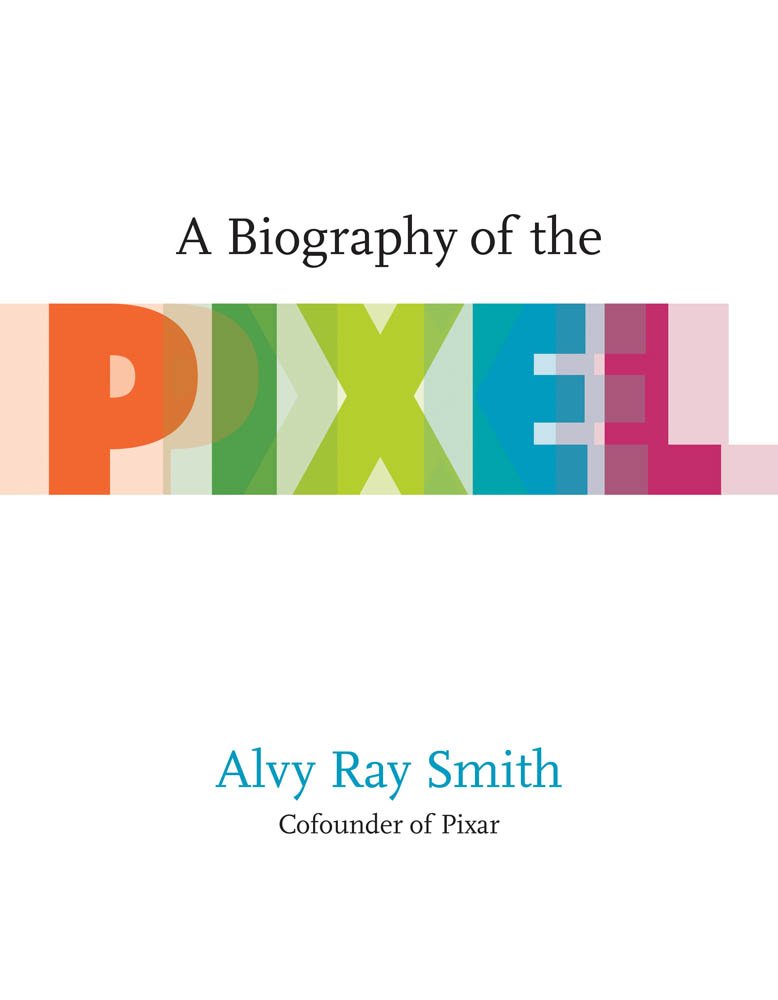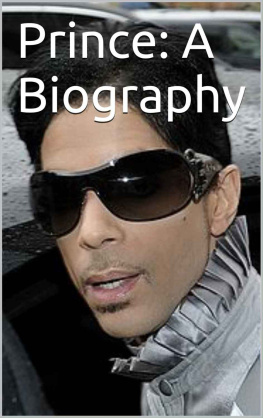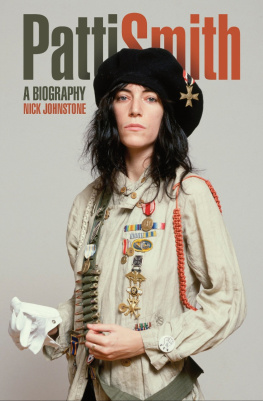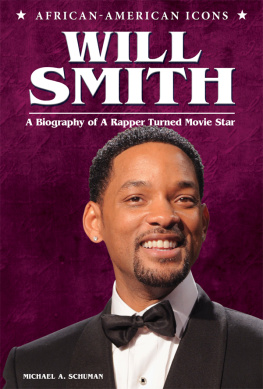Alvy Ray Smith - A Biography of the Pixel
Here you can read online Alvy Ray Smith - A Biography of the Pixel full text of the book (entire story) in english for free. Download pdf and epub, get meaning, cover and reviews about this ebook. year: 2021, publisher: MIT Press, genre: Children. Description of the work, (preface) as well as reviews are available. Best literature library LitArk.com created for fans of good reading and offers a wide selection of genres:
Romance novel
Science fiction
Adventure
Detective
Science
History
Home and family
Prose
Art
Politics
Computer
Non-fiction
Religion
Business
Children
Humor
Choose a favorite category and find really read worthwhile books. Enjoy immersion in the world of imagination, feel the emotions of the characters or learn something new for yourself, make an fascinating discovery.

- Book:A Biography of the Pixel
- Author:
- Publisher:MIT Press
- Genre:
- Year:2021
- Rating:3 / 5
- Favourites:Add to favourites
- Your mark:
- 60
- 1
- 2
- 3
- 4
- 5
A Biography of the Pixel: summary, description and annotation
We offer to read an annotation, description, summary or preface (depends on what the author of the book "A Biography of the Pixel" wrote himself). If you haven't found the necessary information about the book — write in the comments, we will try to find it.
A Biography of the Pixel — read online for free the complete book (whole text) full work
Below is the text of the book, divided by pages. System saving the place of the last page read, allows you to conveniently read the book "A Biography of the Pixel" online for free, without having to search again every time where you left off. Put a bookmark, and you can go to the page where you finished reading at any time.
Font size:
Interval:
Bookmark:

Leonardo
Roger F. Malina, Advising Editor
Sean Cubitt, Editor-in-Chief
Synthetics: Aspects of Art & Technology in Australia, 19561975, Stephen Jones, 2011
Hybrid Cultures: Japanese Media Arts in Dialogue with the West, Yvonne Spielmann, 2012
Walking and Mapping: Artists as Cartographers, Karen ORourke, 2013
The Fourth Dimension and Non-Euclidean Geometry in Modern Art, revised edition, Linda Dalrymple Henderson, 2013
Illusions in Motion: Media Archaeology of the Moving Panorama and Related Spectacles, Erkki Huhtamo, 2013
Relive: Media Art Histories, edited by Sean Cubitt and Paul Thomas, 2013
Re-collection: Art, New Media, and Social Memory, Richard Rinehart and Jon Ippolito, 2014
Biopolitical Screens: Image, Power, and the Neoliberal Brain, Pasi Vliaho, 2014
The Practice of Light: A Genealogy of Visual Technologies from Prints to Pixels, Sean Cubitt, 2014
The Tone of Our Times: Sound, Sense, Economy, and Ecology, Frances Dyson, 2014
The Experience Machine: Stan VanDerBeeks Movie-Drome and Expanded Cinema, Gloria Sutton, 2014
Hanan al-Cinema: Affections for the Moving Image, Laura U. Marks, 2015
Writing and Unwriting (Media) Art History: Erkki Kurenniemi in 2048, edited by Joasia Krysa and Jussi Parikka, 2015
Control: Digitality as Cultural Logic, Seb Franklin, 2015
New Tendencies: Art at the Threshold of the Information Revolution (19611978), Armin Medosch, 2016
Screen Ecologies: Art, Media, and the Environment in the Asia-Pacific Region, Larissa Hjorth, Sarah Pink, Kristen Sharp, and Linda Williams, 2016
Pirate Philosophy: For a Digital Posthumanities, Gary Hall, 2016
Social Media Archeology and Poetics, edited by Judy Malloy, 2016
Practicable: From Participation to Interaction in Contemporary Art, edited by Samuel Bianchini and Erik Verhagen, 2016
Machine Art in the Twentieth Century, Andreas Broeckmann, 2016
Here/There: Telepresence, Touch, and Art at the Interface, Kris Paulsen, 2017
Voicetracks: Attuning to Voice in Media and the Arts, Norie Neumark, 2017
Ecstatic Worlds: Media, Utopias, Ecologies, Janine Marchessault, 2017
Interface as Utopia: The Media Art and Activism of Fred Forest, Michael F. Leruth, 2017
Making Sense: Art, Computing, Cognition, and Embodiment, Simon Penny, 2017
Weather as Medium: Towards a Meteorological Art, Janine Randerson, 2018
Laboratory Lifestyles: The Construction of Scientific Fictions, edited by Sandra Kaji-OGrady, Chris L. Smith, and Russell Hughes, 2018
Invisible Colors: The Arts of the Atomic Age, Gabrielle Decamous, 2018
Virtual Menageries: Animals as Mediators in Network Cultures, Jody Berland, 2019
From Fingers to Digits: An Artificial Aesthetic, Ernest Edmonds and Margaret A. Boden, 2019
MATERIAL WITNESS: Media, Forensics, Evidence, Susan Schuppli, 2020
Tactics of Interfacing: Encoding Affect in Art and Technology, Ksenia Fedorova, 2020
Giving Bodies Back to Data: Image-Makers, Bricolage, and Reinvention in Magnetic Resonance Technology, Silvia Casini, 2021
A Biography of the Pixel, Alvy Ray Smith, 2021
See http://mitpress.mit.edu for a complete list of titles in this series.
Alvy Ray Smith
The MIT Press
Cambridge, Massachusetts
London, England
2021 Massachusetts Institute of Technology
All rights reserved. No part of this book may be reproduced in any form by any electronic or mechanical means (including photocopying, recording, or information storage and retrieval) without permission in writing from the publisher.
The MIT Press would like to thank the anonymous peer reviewers who provided comments on drafts of this book. The generous work of academic experts is essential for establishing the authority and quality of our publications. We acknowledge with gratitude the contributions of these otherwise uncredited readers.
This book was set in ITC Stone Serif Std and ITC Stone Sans Std by New Best-set Typesetters Ltd.
Library of Congress Cataloging-in-Publication Data
Names: Smith, Alvy Ray, 1943 author.
Title: A biography of the pixel / Alvy Ray Smith.
Description: Cambridge, Massachusetts : The MIT Press, [2021] | Series: Leonardo | Includes bibliographical references and index.
Identifiers: LCCN 2020029699 | ISBN 9780262542456 (paperback)
Subjects: LCSH: Computer animationHistory.
Classification: LCC TR897.7 .S52 2021 | DDC 777/.7dc23
LC record available at https://lccn.loc.gov/2020029699
10 9 8 7 6 5 4 3 2 1
d_r1
To
Alison, my beloved wife
Sam and Jesse, my dear sons
and
Leo, Attie, Georgie, Augie, and Evelyn, my adored and ornery grandchildren
Leonardo, the International Society for the Arts, Sciences, and Technology, and the affiliated French organization Association Leonardo, have some very simple goals:
- 1.To advocate, document, and make known the work of artists, researchers, and scholars developing the new ways in which the contemporary arts interact with science, technology, and society.
- 2.To create a forum and meeting places where artists, scientists, and engineers can meet, exchange ideas, and, when appropriate, collaborate.
- 3.To contribute, through the interaction of the arts and sciences, to the creation of the new culture that will be needed to transition to a sustainable planetary society.
When the journal Leonardo was started some fifty years ago, these creative disciplines usually existed in segregated institutional and social networks, a situation dramatized at that time by the Two Cultures debates initiated by C. P. Snow. Today we live in a different time of cross-disciplinary ferment, collaboration, and intellectual confrontation enabled by new hybrid organizations, new funding sponsors, and the shared tools of computers and the internet. Sometimes captured in the STEM to STEAM movement, new forms of collaboration seem to integrate the arts, humanities, and design with science and engineering practices. Above all, new generations of artist-researchers and researcher-artists are now at work individually and collaboratively bridging the art, science, and technology disciplines. For some of the hard problems in our society, we have no choice but to find new ways to couple the arts and sciences. Perhaps in our lifetime we will see the emergence of new Leonardos, hybrid creative individuals or teams that will not only develop a meaningful art for our times but also drive new agendas in science and stimulate technological innovation that addresses todays human needs.
For more information on the activities of the Leonardo organizations and networks, please visit our websites at http://www.leonardo.info/ and http://www.olats.org/. The Arizona State UniversityLeonardo knowledge enterprise provides leadership to advance ASUs transdisciplinary art-science research, creative practice, and international profile in the field: https://leonardo.asu.edu/.
Roger F. Malina
Advising Editor, Leonardo Publications
- ISAST Governing Board of Directors: Raphael Arar, Michael Bennett, Felicia Cleper-Borkovi, Nina Czegledy, Adiraj Gupta, Greg Harper, Marc Hebert (Chair), Minu Ipe, Gordon Knox, Roger Malina, Xin Wei Sha, Joel Slayton, Tami Spector, Timothy Summers, Darlene Tong
Font size:
Interval:
Bookmark:
Similar books «A Biography of the Pixel»
Look at similar books to A Biography of the Pixel. We have selected literature similar in name and meaning in the hope of providing readers with more options to find new, interesting, not yet read works.
Discussion, reviews of the book A Biography of the Pixel and just readers' own opinions. Leave your comments, write what you think about the work, its meaning or the main characters. Specify what exactly you liked and what you didn't like, and why you think so.



